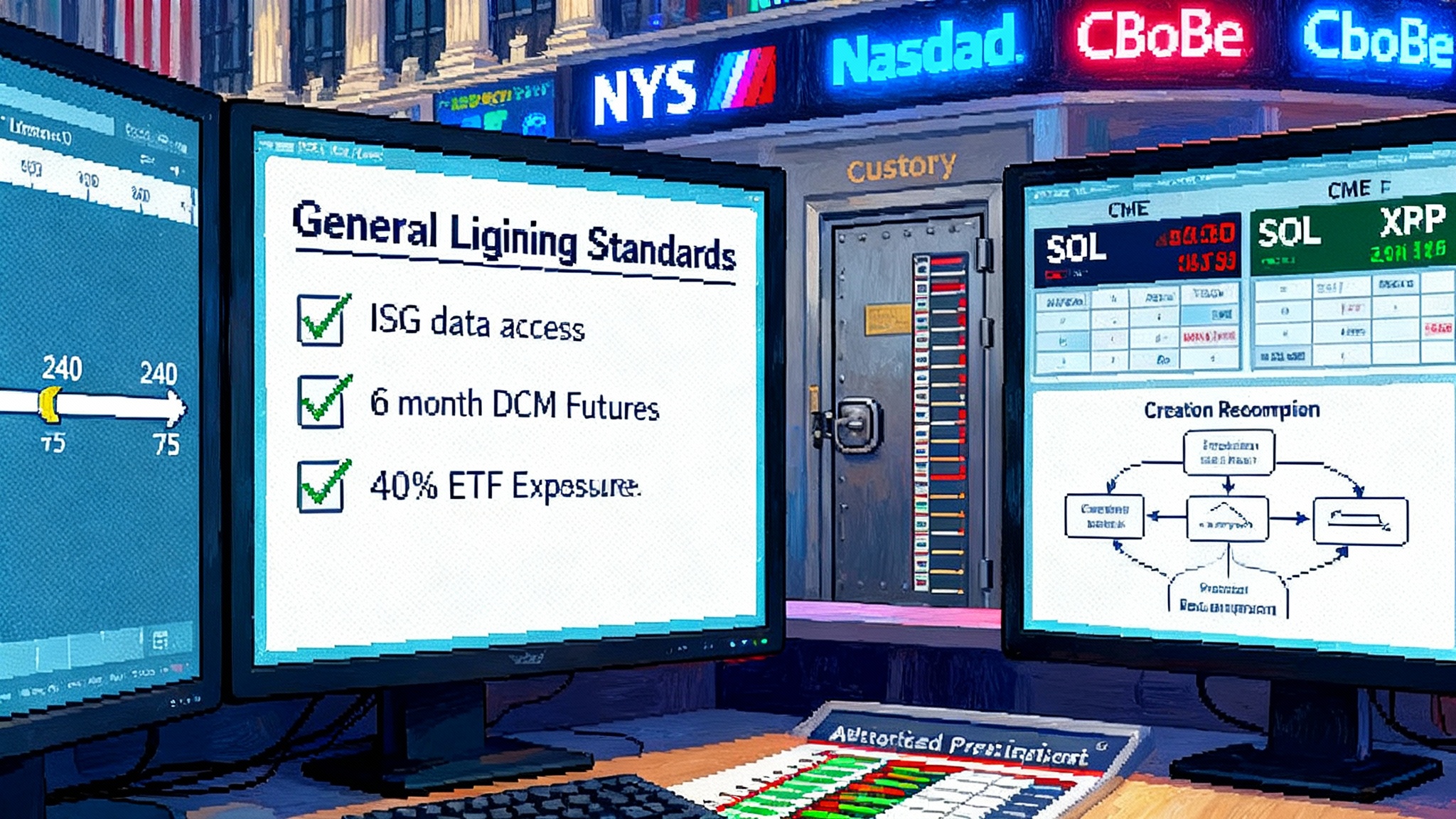BTCFi lands on Starknet: trustless BTC staking, 100M STRK
Starknet has switched on BTCFi, bringing non-custodial Bitcoin staking and a 100 million STRK incentive program to jump-start BTC-backed lending and liquidity. Here is what launched, how it works, the risks, and the scorecard to watch over the next six months.

Breaking: Bitcoin goes to work on Starknet
On September 30 and October 1, Starknet flipped the switch on its Bitcoin arc. Two things happened at once. First, Bitcoin holders can now stake BTC on Starknet and earn STRK-denominated rewards while helping secure the network. Second, the Starknet Foundation committed 100 million STRK over at least six months to bootstrap BTC-backed lending and deep BTC pools on Starknet’s decentralized exchanges. The package, branded BTCFi Season, is designed to pull idle BTC into productive use and to make borrowing dollars against BTC cheaper for everyone who needs onchain credit. See the program’s official outline in the Foundation’s BTCFi Season overview.
The timing is deliberate. Bitcoin sits as the largest pool of passive collateral in crypto, largely parked in cold storage. If Starknet can bring even a sliver of that stack onchain with tight spreads, predictable yields, and safe exits, it can change where stablecoin borrowing happens and how much it costs.
What exactly launched
- Non-custodial BTC staking on Starknet. You delegate tokenized BTC to validators and earn STRK rewards. “Non-custodial” here means the validator cannot run away with your tokens; you keep withdrawal rights and can re-delegate or exit per the protocol’s rules.
- A 100M STRK incentive budget for six months. These rewards flow to protocols that make BTC useful: money markets that accept BTC as collateral for stablecoin loans and exchanges that host deep BTC pairs. The design targets a flywheel where BTC inflows deepen liquidity, tighter markets attract borrowers, and weekly incentives reward activity that makes spreads and borrowing costs fall.
- A curated basket of BTC representations at launch. Starknet supports wrapped assets including WBTC, tBTC, LBTC from Lombard, and SolvBTC. Each has its own trust model and bridge plumbing. This basket can expand as wrappers clear technical and governance reviews.
- Composability on day one. Because staking happens on Starknet, liquid staking tokens for BTC are already in motion. For example, a delegator can get a receipt token representing staked BTC, then use that token across lending markets or liquidity pools, while rewards continue to accrue.
The plumbing, in plain English
Think of two rails running side by side:
- The collateral rail moves your BTC into Starknet in a tokenized form. You might swap native BTC for a wrapper like WBTC or tBTC, then bridge that wrapped asset to Starknet. Once on Starknet, that token is standard ERC-style collateral the rest of the network understands.
- The staking rail lets you delegate that wrapped BTC to a validator set. You pick a validator or their delegation pool, deposit, and begin earning STRK rewards. You can later un-delegate and withdraw the same wrapper you staked.
The two rails connect in DeFi. A liquid staking token for your delegated BTC slots into a money market, so you can post that token as collateral and borrow USDC or USDT. Now your BTC earns staking rewards and also finances a loan. When many users do this, markets price in two effects: more BTC supply in pools and more demand to borrow stablecoins. Incentives are tuned to make the net effect tighter spreads and lower net borrowing costs.
Important nuance on the word “trustless.” The staking contracts on Starknet are non-custodial and enforceable by code, but the wrapped BTC you bring in carries the security model of its bridge or custodian. WBTC depends on a qualified custodian and a signatory set; tBTC relies on a decentralized threshold network design; Lombard and Solv have their own designs. The staking layer does not remove wrapper risk; it sits on top of it.
From idle BTC to borrowable collateral
Imagine a long-term BTC holder with 2 BTC who wants temporary dollars without selling. Before this week, they might have bridged BTC to another chain or used a custodial loan. Now they can:
- Wrap and bridge the BTC to Starknet.
- Delegate the wrapped BTC to a validator, receiving a liquid staking token.
- Post that token to a Starknet money market and borrow USDC.
- Use the USDC for trading, payroll, or hedging.
This stack has two cash flows. Outflows are the interest on the USDC loan. Inflows are STRK staking rewards, plus any protocol incentives routed to either the money market or the user. If the Foundation tilts rewards toward borrowers, the net rate is the headline borrow rate minus the weekly STRK rebate value. When lots of BTC enters as collateral, lenders compete to attract it, and borrowers compete to borrow against it. The incentives are the push to start the flywheel. Over time, if the flywheel spins on its own, the system relies less on STRK as a subsidy and more on market depth and predictable demand.
Why this could compress stablecoin borrowing costs
Stablecoin borrowing is a simple market: the more safe collateral enters, the cheaper dollars can be. BTC is the deepest crypto collateral on earth. By paying protocols to accept and route BTC efficiently, Starknet imports collateral at scale. Money markets that win rebates for stablecoin borrows against BTC can share those rebates with borrowers as negative points on the rate. Picture a 6 percent base borrow rate offset by 3 percent in rebates and 1 percent in staking rewards value. The net all-in cost drops to roughly 2 percent in that simplified example. As stablecoin rails evolve, like the Tether rail switch remaking payments, the supply of wholesale dollars onchain is shifting, which can amplify the impact of cheaper BTC-backed credit.
The critical checkpoint comes when subsidies fade. If liquidity stays and rates remain low without heavy rebates, the design worked. If rates snap back, the market was riding on incentives rather than true demand and depth.
The governance anchor: BTC is capped at 25 percent of staking power
Starknet’s community set the parameter alpha so that BTC can contribute up to 25 percent of the total consensus weight, with the rest allocated to STRK. That limit keeps control with STRK while giving BTC a meaningful stake in network security and rewards. The decision also preserves STRK stakers’ yield by minting additional rewards for BTC, instead of slicing existing STRK rewards. The terms are documented in the network’s SNIP-31 vote details.
This split matters for two reasons. One, it reduces the fear that an external asset could dominate the network’s consensus. Two, it gives BTC holders a clear ceiling for what their stake can influence, which should reduce governance whiplash.
Does this reset the Layer 2 race
The Layer 2 landscape has been competing on fees and developer ergonomics. Starknet is taking a different angle: be the network that makes BTC the best collateral to use. If the network becomes the cheapest, deepest place to borrow dollars against BTC, protocols and users who rely on that funding will move activity there. That does not invalidate general purpose rollups like Arbitrum, Optimism, or Base. For broader context on rollup strategy, see our analysis of the Ethereum L1 zkEVM roadmap and the Arbitrum Timeboost auction design.
There is a second-order effect. If BTC-backed borrowing becomes cheaper on Starknet, stablecoin issuers and payment apps that want predictable wholesale dollar rates may prefer to integrate Starknet rails. That pushes more merchants and remittance flows onto the network. Liquidity begets liquidity.
The trade-offs to watch
- Wrapper and bridge risk. You are not staking native Bitcoin. You are staking representations with their own trust models. A failure in a wrapper or bridge can break the value of your tokenized BTC and ripple into staking and lending positions.
- Sequencer decentralization. Starknet is still maturing on sequencer resilience. A recent outage reminded everyone that liveness and failover are not academic details. As BTC-backed positions grow, operators will demand measurable progress on sequencer decentralization and a robust fallback plan.
- Reward inflation. BTC staking rewards add on top of STRK issuance rather than taking from STRK stakers. That is a policy choice with costs and benefits. It attracts BTC now but increases token emissions. The network needs growth in real fee-paying activity to justify it.
- Looping risk. Liquid staking tokens make it possible to loop collateral. That boosts apparent collateral but increases reflexivity. Protocols should cap or penalize looping that creates fragile collateral chains.
How Babylon and BitVM differ from Starknet’s approach
Babylon targets native Bitcoin staking that secures proof of stake networks without bridging your BTC. In Babylon, your coins stay on Bitcoin and are time-locked with scripts. If the validator you delegate to misbehaves on the consumer chain, a cryptographic trick called extractable one-time signatures allows your time-locked UTXO to be slashed. Babylon’s value proposition is Bitcoin-grade security for proof of stake finality and faster unbonding, not immediate access to tokenized BTC inside DeFi. It is closer to exporting Bitcoin’s security to other chains than to importing Bitcoin as collateral into one chain’s applications.
BitVM, by contrast, is a design for verifying arbitrary computation via disputes anchoring on Bitcoin. Builders are using BitVM-style fraud proofs to create bridges where a single honest party can keep the bridge safe. These designs aim to reduce trust in multi-signature custodians and move toward verifiable redemption of Bitcoin without changing Bitcoin’s base rules. In theory, BitVM bridges could deliver BTC to many chains with stronger guarantees. In practice, they are still maturing. Starknet’s route is pragmatic today: accept vetted wrappers with known trade-offs, get BTC into use quickly, and iterate toward more trust-minimized sources as they harden.
The takeaway: Babylon and BitVM are long-term security rails. Starknet’s BTCFi is a near-term utility rail. They can converge later. For now, Starknet is optimizing for immediate, composable BTC collateral inside its own DeFi.
The near-term scorecard
If you want to know whether BTCFi is working on Starknet, watch these metrics week by week during the six-month program:
- BTC total value locked on Starknet. Measure how much WBTC, tBTC, LBTC, and SolvBTC are bridged and staked. Concentration is a risk, so track the mix by wrapper.
- Stablecoin borrows against BTC. Follow outstanding USDC and USDT loans collateralized by BTC. Rising borrows with stable liquidation metrics signal healthy demand.
- Borrow rates vs Ethereum money markets. The point of the program is cheaper dollars. Compare net borrow rates after STRK rebates to equivalent markets elsewhere.
- BTC pool depth and spreads on top DEX venues. Deeper pools with tighter spreads show that incentives are producing real market quality, not just mercenary hops.
- Share of consensus power from BTC. This should climb but stay capped at 25 percent. The mix over time shows whether the program attracts persistent BTC stake.
- LST adoption. Track how much staked BTC sits idle versus how much is used as collateral or liquidity. High LST utilization means composability is working.
- Incentive efficiency. Follow how many STRK are being spent per unit of new BTC TVL or per dollar of net new stablecoin borrowing. Efficiency should improve as markets thicken.
Who should do what now
- For BTC holders. Decide your risk tolerance by wrapper. WBTC has custodial trust, tBTC is decentralized but with its own limits, Lombard and Solv have distinct designs. Start small, delegate to a validator with clear track records, and prefer positions that can unwind without racing others to the exit.
- For traders and treasurers. Price the all-in cost of borrowing on Starknet including expected STRK rebates. If the net is materially lower, consider shifting basis trades, inventory financing, or working capital there while monitoring weekly changes.
- For builders. Design for safety. Add wrapper-aware risk parameters, conservative liquidation thresholds, and guardrails on recursive loops. Integrate staking receipt tokens natively so users do not have to choose between yield and utility.
The bottom line
Starknet is making a hard bet: turn Bitcoin from the world’s largest idle asset into the cheapest, most liquid collateral on a high-performance rollup. It is paying up front with 100 million STRK to test the thesis that deep BTC collateral compresses borrowing costs and pulls real activity onchain. The governance guardrail that caps BTC’s influence at 25 percent keeps control with STRK while inviting the largest asset in crypto into the security set. Babylon and BitVM aim to reduce trust at the edges over time. Until they fully arrive, Starknet’s path gets BTC working today.
If the next six months show sustained BTC inflows, lower net dollar borrowing costs, and stable operations, Starknet will have carved out a category others must answer. If the results hinge on weekly handouts, the market will say so. Either way, the experiment just began, and the scoreboard will be public every block.








